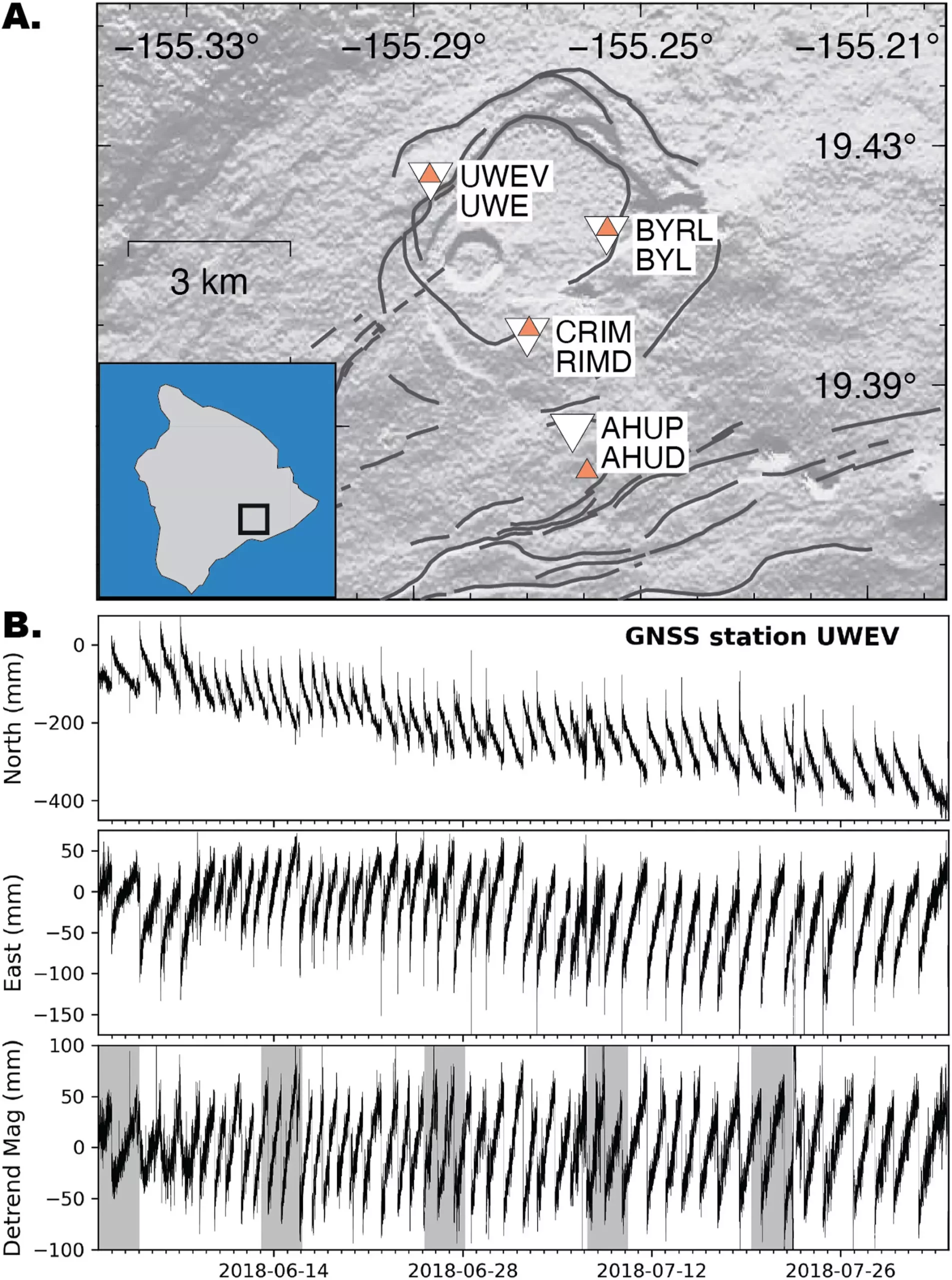Earthquakes have long been a mystery, with their sudden and destructive nature leaving scientists scrambling for ways to predict them. However, a team at Los Alamos National Laboratory has made significant strides in this area by using machine learning to detect hidden signals that precede earthquakes. This groundbreaking research at the Kīlauea volcano in Hawaii has the potential to revolutionize earthquake prediction and mitigation efforts.
Christopher Johnson, a seismologist at Los Alamos, led the team in utilizing machine learning to identify these warning signals in a stick-slip fault. This type of fault is known for its ability to generate massive destruction, making the detection of pre-earthquake signals crucial. By analyzing data recorded by the U.S. Geological Survey’s Hawaiian Volcano Observatory, researchers were able to pinpoint a hidden signal that tracked the loading cycle of each seismic event. This method could potentially be applied to assess earthquake hazards globally, providing valuable insights into fault behavior.
Revealing Hidden Patterns
One of the most significant findings of this research is the revelation that continuous acoustic or seismic emissions, previously dismissed as noise, contain valuable data about the state of a fault. By examining how these signals evolve over time, researchers were able to predict where the fault is in its loading cycle and estimate the time to the next failure. This new understanding of fault physics could pave the way for more accurate earthquake forecasting and early warning systems.
The team’s success in applying machine learning to seismogenic faults marks a significant breakthrough in earthquake research. By analyzing highly active stick-slip events at the Kīlauea volcano, researchers were able to measure ground displacement and predict fault failures. This method, previously used for slow-slip events, proves to be effective in detecting precursory signals for more rapid and destructive earthquakes. The combination of cutting-edge technology and in-depth data analysis has unlocked new possibilities in earthquake prediction.
Challenges and Future Directions
While the results of this study are promising, challenges still remain in the field of earthquake prediction. Stick-slip faults, like the one at the Kīlauea volcano, continue to pose a threat due to their rapid and unpredictable nature. Further research is needed to refine machine learning models and expand the scope of analysis to different fault types and regions. By continuing to push the boundaries of seismic research, scientists hope to enhance our ability to forecast and mitigate the impact of earthquakes on vulnerable communities.
The use of machine learning to detect hidden signals preceding earthquakes represents a major advancement in the field of seismology. The research conducted at Los Alamos National Laboratory sheds light on the complex dynamics of fault behavior and offers new pathways for improving earthquake prediction capabilities. By leveraging the power of artificial intelligence, scientists are unlocking the secrets of earthquakes and moving closer to a future where these natural disasters can be forecasted with greater accuracy.


Leave a Reply